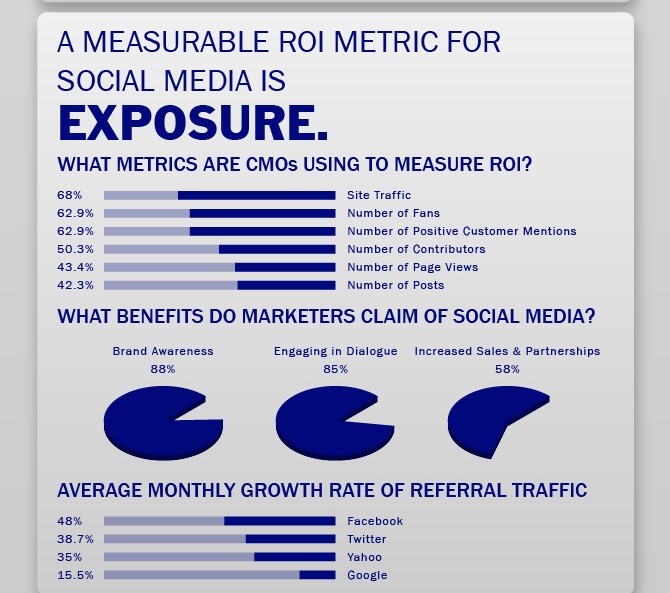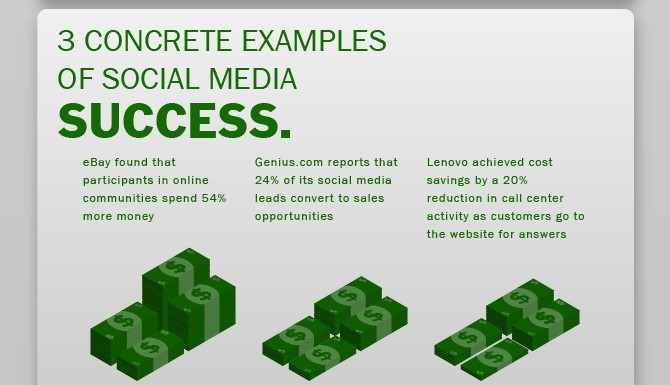You’ve seen the light; you know thought leadership is essential to get your business to the next level. How do you get everyone else onboard? Let’s look at some tools to help you measure thought leadership. Then we’ll talk about leveraging thought leadership, as well as how to promote thought leadership within your team.
How to Measure Thought Leadership
Altimeter Group is part of Prophet, a global brand and marketing consultancy that helps businesses build relevance and deliver engaging customer experiences. Altimeter helps create and develop content and social business strategies.
Brian Solis is a Principal Analyst at Altimeter and the author of X: The Experience When Business Meets Design. In a recent exclusive interview, he said thought leadership can be measured by social media responses, like followers and “likes,” or book sales and placement on the New York Times Best Sellers list.
“These are the numbers that become the standards for the next generation of thought leaders,” Solis said.
It all comes down to exposure.
Thought leadership also can be measured by tracking an increase in unique visitors to the company website, as well as repeat customers, or the amount of time visitors spend on the site and how many pages they view.
Requests for quotes and interviews can also signify growth as a thought leader. An increase in new client meetings, an increase in the size of new business growth, and new business leads could all be used to measure success in thought leadership.
How to Leverage Thought Leadership
From a basic, monetary standpoint, the reason to develop thought leadership is to leverage it to the benefit of the company’s bottom line.
Since launching its Smarter Planet initiative in 2008, IBM is proof a thought leadership campaign can leverage real monetary results. By 2010, the Smarter Planet initiative had already generated $3 billion in revenue. Couple that with double-digit growth from thousands of clients, and it’s clear to see a successful return on investment (ROI) on the company’s thought leadership.
More recently, IBM believed so strongly in the power of social relationships that it quantified annualized new revenue for each new contact at nearly $1,000.
But it’s also important to remember that achieving short-term business benefits is only half the battle. Continuous, constructive, and meaningful contributions to thought leadership can contribute to a company’s aggregate growth over time.
The more a company’s thought leadership develops, the more it can be leveraged to increase the company’s visibility, ensure future inclusion in events like the World Economic Forum, provide opportunities for top company officials to network, and promote media exposure.

Caption: Real examples of social media ROI. Credit:Psoshul
“Influence is the ability to change behavior,” Solis said. Finding out where business is bottlenecked and fixing it—to the benefit of the customer and the business—is what thought leadership is about.
“The opportunity for true thought leadership is trying to make an impact, trying to make a difference,” Solis said. “For an empathetic thought leader, that is satisfaction.”
In many cases, the key to identifying areas of need is knowing where to look.
While a news agency can provide some insights on business trends in the form of articles and business interviews, the real story is now in the comments section. That’s right—the readers themselves collectively wield the leverage that comes with broadcast public opinion. Engaging with the audience at the source can yield real benefits.
Understanding what concerns the audience may have is, as always, paramount to successful thought leadership. Reading, listening, and participating—not just talking—can keep the momentum going, Solis said.
“It’s so enlightening. Do more of the former than the latter,” Solis said. “I publish less than I listen. Listen, learn, and participate. Social media is a true democratizer when it comes to the ability to learn and share.”
How to Promote Thought Leadership (Internally)
Just as effective thought leadership requires listening to audiences, building thought leadership within a company calls for listening to employees—and providing them with a safe environment to share ideas.
How much thought leadership employees are able to contribute ultimately depends on what their company’s leadership organization looks like, Solis explained. Some companies say they want thought leadership in theory but don’t recognize or reward it in reality.
Sharing ideas can be risky for employees if the leadership feels threatened and wants to keep a potential thought leader from becoming associated with the company’s brand or recognized within the industry. But it’s also risky for a company to reward rising thought leaders, only to see them looking for the next big contract.
The solution lies in fostering the right combination of encouragement for employee thought leadership, and employee loyalty. That allows thought leaders to rise through the ranks and greatly benefit all involved. Solis said promoting thought leadership internally requires opportunities to inspire employees to learn more about their field and be better at what they do. And that’s good for the bottom line.
Rising thought leaders also can boost a company’s ability to engage in social media. That’s a component of many thought leadership campaigns that needs improvement.
“If you look at HR, training, and growth, we’re still talking about the Dark Ages in most organizations today,” Solis said.
Today’s opportunities to engage with customers, and provide meaningful, helpful thought leadership to a responsive audience, are absolutely unprecedented. A lot of that is thanks to social media.
“The idea of thought leadership in an era of social media is an incredible gift,” Solis said. “Speaking personally, there’s a sense of aspiration. When you get to see [your ideas] have traction, it’s very rewarding.”





Leave a Reply